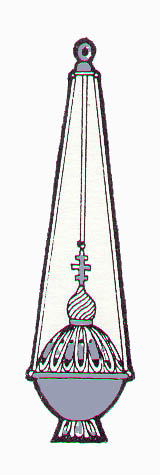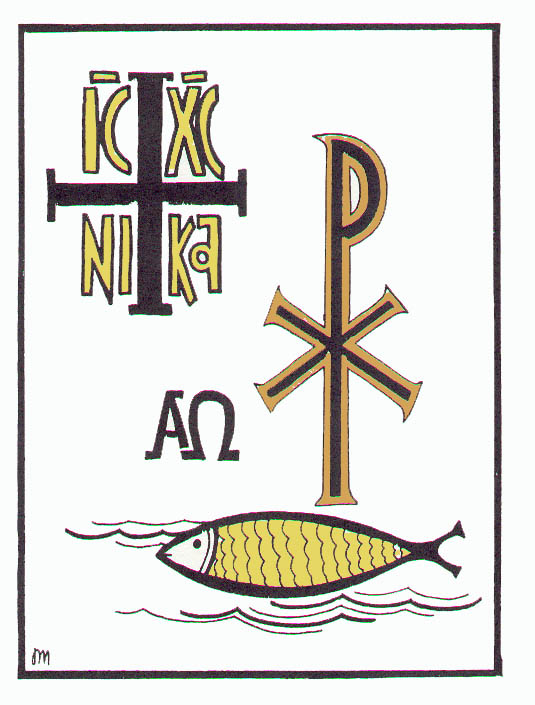Christian Symbols
The Orthodox Church abounds with the use of symbols. These symbols are those realities which have the power and competence of manifesting God to men, signs which carry us beyond ourselves and themselves into the genuine union and knowledge of things eternal and divine.
Among the Christian symbols we have already mentioned are the icons, the sign of the cross, and the vestments of liturgical celebration. In addition, we can mention the use of various colors which have their particular significance, as well as the use of light, normally the natural light of candles, which leads us to Christ, the Light of the world and of the Kingdom of God. Generally speaking, light is a universal symbol for the mystical presence of God as the True, the Beautiful and the Good. This is witnessed in almost all religions, philosophies, and artistic expressions.

The Orthodox Church follows the Bible in its use of incense (Ex 30.8, Ps 141.2; Lk 1.9; Rev 8.3). Incense is the symbol of the rising of prayers, of spiritual sacrifice and of the sweet-smelling fragrance of the Kingdom of God.
The Church also uses bread, wine, wheat, oil, water, flowers and fruits as signs of God’s love, mercy, goodness, life and the very presence given to man in creation and salvation. Indeed, all elements of creation find the “truth” of their very being and existence as expressions and manifestations of God, as “symbols” of his presence and action in the world for man. This is the reason for their use in this way in the Church.

Among the more graphic Christian symbols in the Church are the initials and letters of Christ’s name; the triangle of the Trinity; the circle of eternity; the fish which stands for Jesus Christ, Son of God, Saviour; the eye of God’s omnipresence; the anchor of hope; the rock of faith; the flame of God’s consuming presence; the vine which Jesus named himself—“I am the vine, you are the branches” (Jn 15.5); the alpha and the omega (Rev 1.8); the crown and staff of Christ’s kingship; and many others—all of which indicate some aspect of the saving presence and action of God in the world.
The use of symbols is a mode of revelation and communion which passes beyond that of mere verbal or intellectual communication. The death of symbols comes when they are artificially invented, rationally explained, or reduced to mere “illustrations” whose meaning is not immediately grasped by man on the level of his living spiritual vision and experience.
